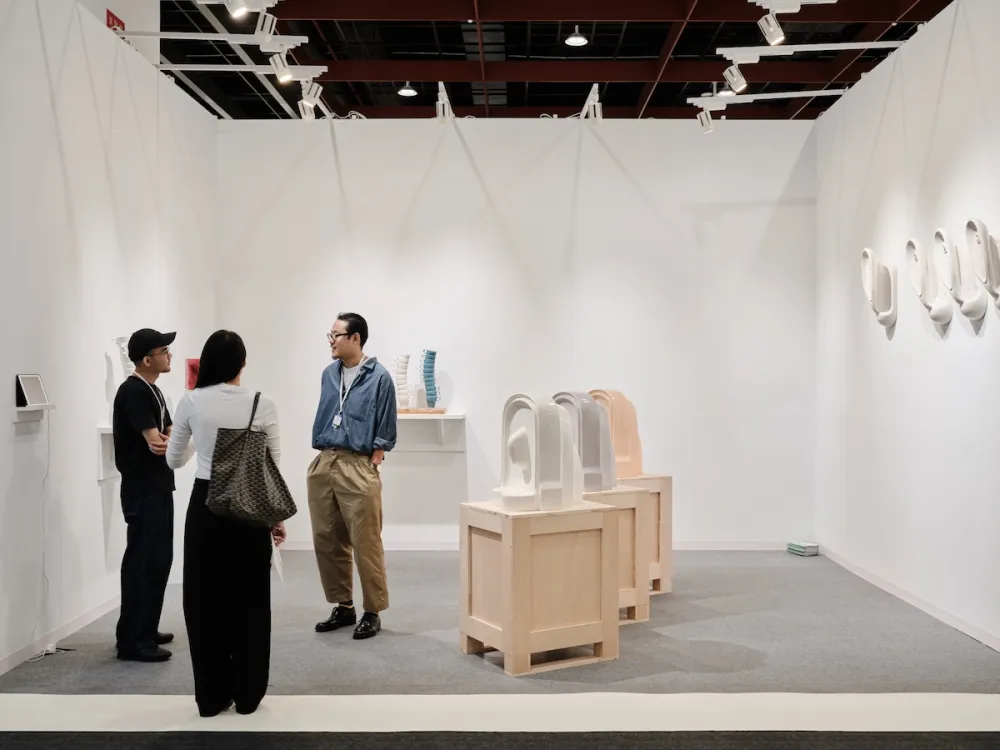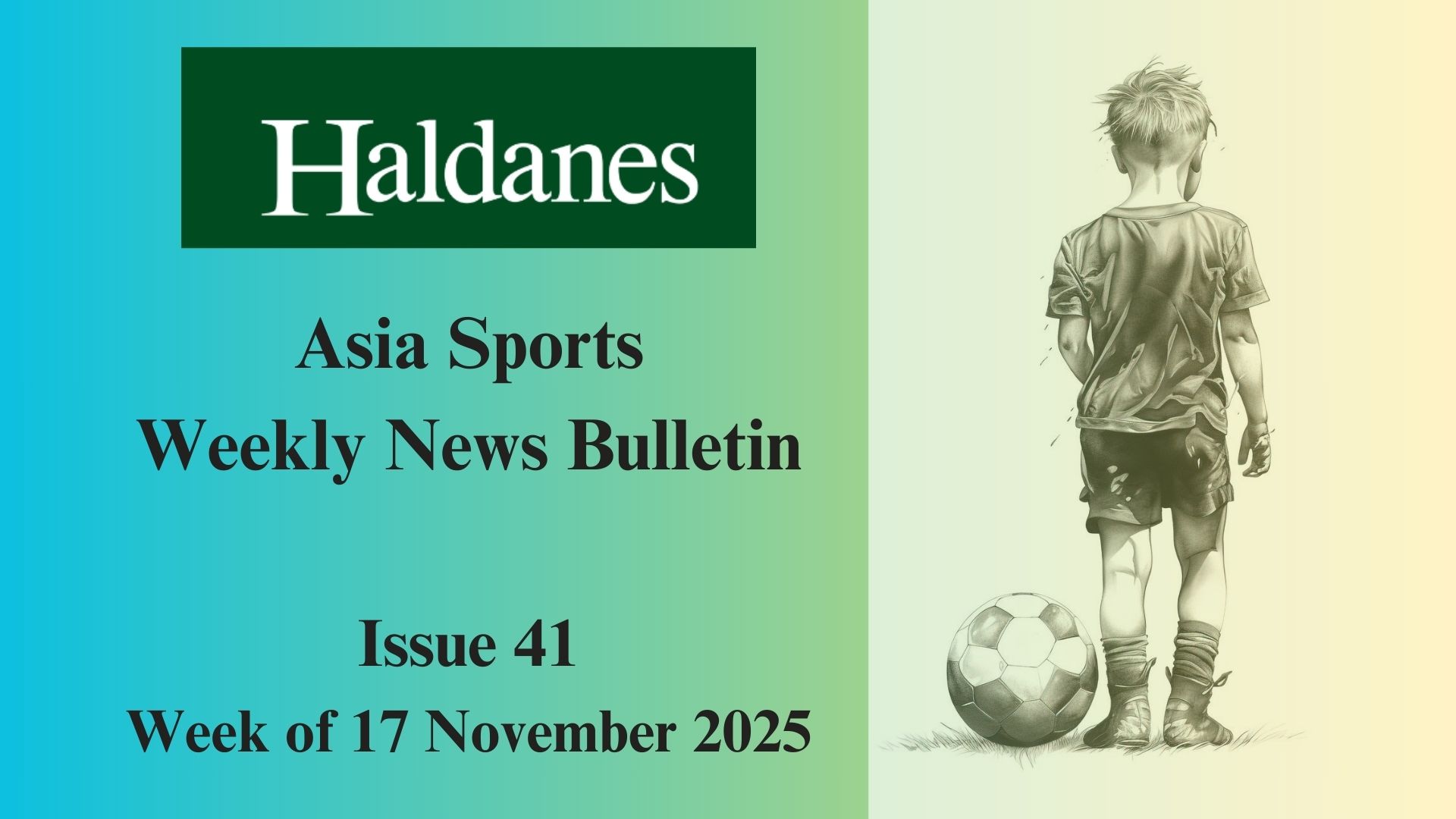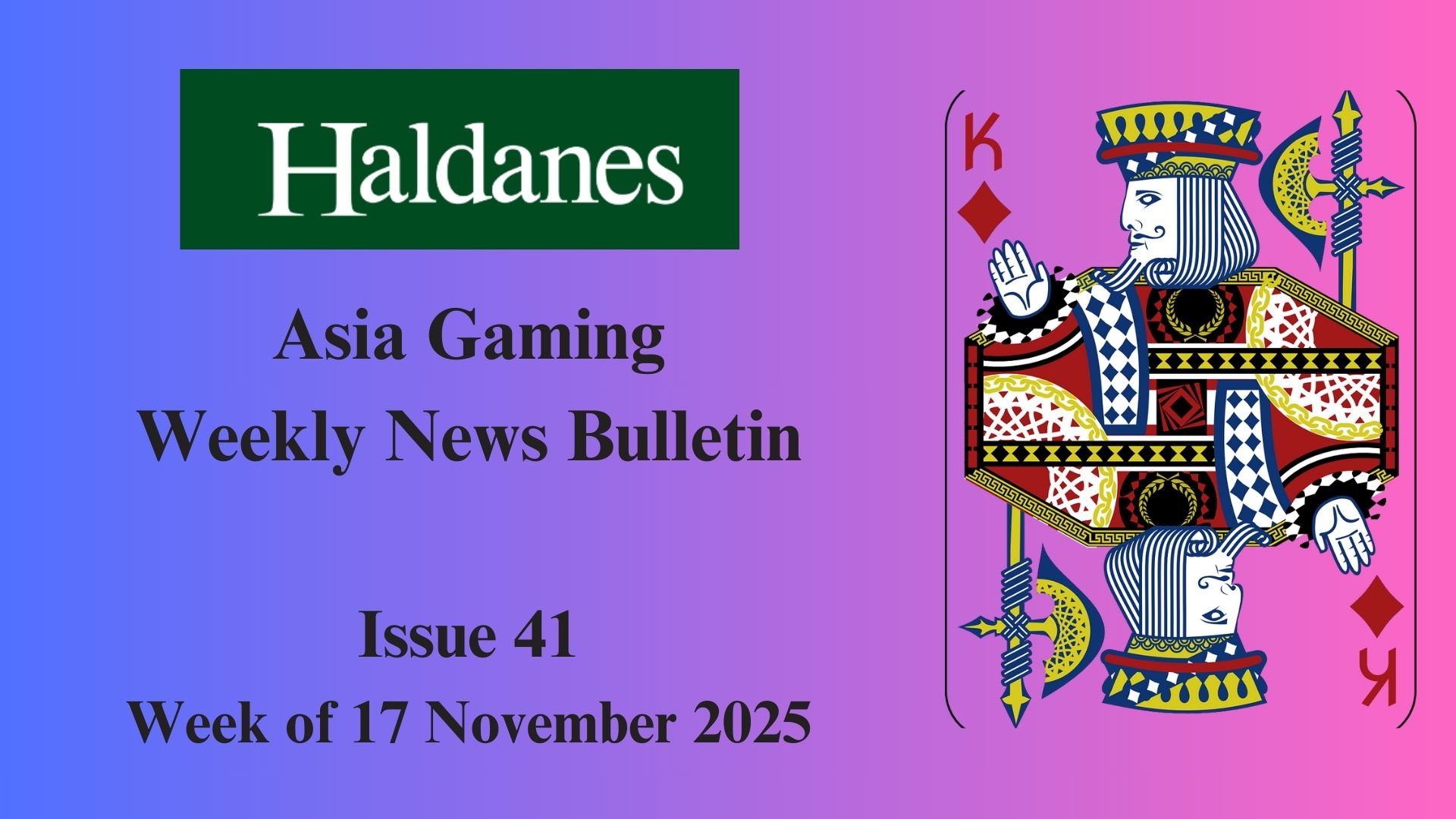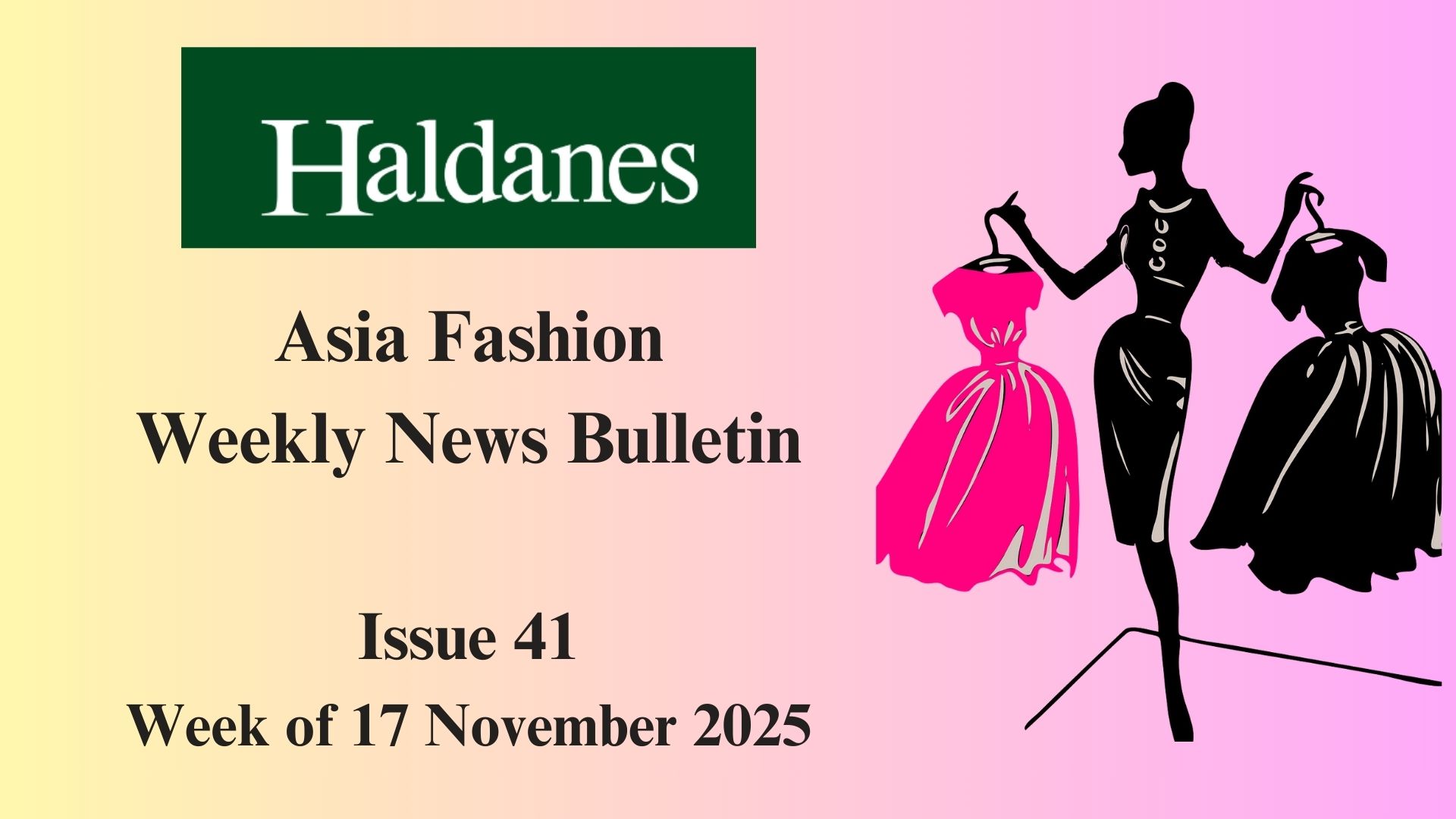Asia Art Weekly News Bulletin – ISSUE 38 Week of 27 October 2025
(1) HKPM unveils ancient Egyptian treasures ahead of major exhibition
HKPM unveils three Egyptian statues for 2025–2026 blockbuster exhibition. Multimedia, workshops, and public previews enhance the largest Egyptian showcase in Hong Kong, bridging ancient heritage with modern engagement.
(2) Taipei Art Week Opens Amid Crowded Fair Calendar, Rising Tensions With China, and a Challenging Year for Taiwan’s Art Market
Taipei Art Week thrives regionally despite market slump, China visa bans. Art Taipei draws cautious sales; institutional boom and tech collectors signal resilience amid cross-strait tensions.
(3) How Korean art first entered Western museums
Korean art entered Western museums late 19th century via diplomats like Möllendorff; ethnographic focus, colonial sourcing delayed recognition. Post-war tours shift to fine art; curators now rediscover overlooked treasures.
(4) India Art Fair’s new initiative to unveil an artistic chapter in Hyderabad
IAF EDI+IONS debuts in Hyderabad November 1–2, showcasing art/design reflecting city’s heritage-innovation blend. Mumbai edition cancelled; focuses on regional networks for South Asian global impact.
(1) HKPM unveils ancient Egyptian treasures ahead of major exhibition

(Photo Credit: The Standard)
The Hong Kong Palace Museum (HKPM) unveiled three monumental ancient Egyptian statues on October 28, 2025, during a crate-opening ceremony, marking preparations for the blockbuster exhibition “Ancient Egypt Unveiled: Treasures from Egyptian Museums,” running from November 20, 2025, to August 31, 2026. Organized with Egypt’s Supreme Council of Antiquities and sponsored by Bank of China (Hong Kong), Cathay, and UnionPay International, it is the largest Egyptian showcase in Hong Kong, featuring loaned artifacts that remain Egypt’s inalienable property.
The 2.4-meter, 1,700-kg striding statue of Pharaoh Merenptah (19th Dynasty) now stands on the ground floor, joined by Shepenwepet II (25th Dynasty) and seated goddess Iunit (18th Dynasty) in the second-floor atrium—publicly viewable from October 29. The exhibition includes over ten multimedia installations, such as projection-mapped restoration of a Tutankhamun statue, mummification videos, and interactive hieroglyph name conversion, alongside educational workshops on jewellery, pyramids, and cat temples.
This historic collaboration elevates HKPM as a global cultural bridge, leveraging Egypt’s treasures to boost Hong Kong’s tourism and education sectors amid post-pandemic recovery. By integrating multimedia and public previews, the museum enhances accessibility and engagement, though high ticket prices (HK$190–230) may limit inclusivity, positioning the event as a premium cultural milestone with strong early demand.
News Source: https://www.thestandard.com.hk/hong-kong-news/article/315376/
(2) Taipei Art Week Opens Amid Crowded Fair Calendar, Rising Tensions With China, and a Challenging Year for Taiwan’s Art Market

(Photo Credit: Art Taipei)
Taipei Art Week’s second edition, anchored by Art Taipei (Asia’s oldest fair, VIP preview October 30, 2025) and the 14th Taipei Biennale, drew strong regional crowds despite a crowded global calendar and Taiwan’s art market slump. TAGA chairwoman Claudia Chen noted galleries aligned top shows with the week, boosting quality and pop-ups. Japanese dealer Yurika Shiraishi praised local collectors’ engagement, with Scai staging Tatsuo Miyajima pop-ups. However, art imports fell 15.2% in 2024, Ravenel auctions dropped from $14.6M (2020) to $3.6M (2025), and Taipei Dangdai ceased after May.
Geopolitical tensions slashed mainland Chinese visitors: Art Taipei invited ~200 last year, nearly zero in 2025; seven galleries withdrew over visa/logistics issues. National Palace Museum visitors from China/Hong Kong/Macau plummeted from 3.32M (2016) to 50,000 (2024). Some locals like Each Modern and Galerie du Monde skipped, focusing on Europe or market cultivation. TAGA countered with The Collector Circle, partnering Kiaf Seoul and Art Jakarta; VIP registrations rose 1.5x via Korea, Southeast Asia, Japan outreach. Opening sales were cautious, mostly under $50,000 (e.g., De Sarthe’s $75,000 Tworkov, Scai’s Nawa/Ohba works).
Taiwan’s market contraction reflects post-pandemic normalization and cross-strait barriers, but institutional growth—Taichung Art Museum (SANAA, late 2025), New Taipei Art Museum (May), Gehry project—signals public commitment. Tech-fueled collectors drive blue-chip presence and idealism, yet mid-tier ($50K–$500K) sales remain fragile amid fair costs. Art Taipei’s regional pivot sustains relevance, but long-term viability hinges on easing travel restrictions and nurturing local demand to rival Asia’s fair giants.
News Source: https://www.artnews.com/art-news/market/taipei-art-week-taiwan-market-review-1234758632/
(3) How Korean art first entered Western museums

(Photo Credit: GRASSI Museum Leipzig)
Korean art entered Western museums in the late 19th century via diplomats, missionaries, and travelers after the 1882 U.S.-Korea Treaty opened the “Hermit Kingdom.” Paul Georg von Möllendorff, a German adviser to King Gojong (1882–1885), collected everyday Joseon objects for Leipzig’s GRASSI Museum, forming Europe’s largest Korean ethnographic holdings (~2,700 items). In the U.S., Edward Sylvester Morse at Peabody Essex Museum acquired ~220 items via Möllendorff and Korean diplomat Yu Kil-chun’s donations (1883–1885), while Charles Lang Freer bought 80 Goryeo celadons from diplomat Horace Newton Allen in 1907 for the Smithsonian.
Early acquisitions were ethnographic, driven by curiosity rather than aesthetic pursuit, often misidentified or sourced in bulk through dealers like Yamanaka & Co. during Japan’s 1910–1945 colonial rule. Korean works—celadon, lacquerware, mother-of-pearl furniture—entered via diplomacy, looting, or markets, filtered through Japanese tastes (e.g., celadon for tea ceremonies). Post-1950s, the 1957 “Masterpieces of Korean Art” tour and modern dealerships shifted focus from ethnography to fine art, though Korean collections remained overshadowed by Chinese and Japanese holdings.
This delayed, incidental entry reflects Korea’s isolation and colonial losses, with early Western views shaped by incomplete context and Japanese mediation. Recent curatorial rediscoveries—via reattribution, digital tools, and pop-culture links—signal a rebalancing, elevating Korean art’s global narrative. As institutions like PEM and GRASSI expand dedicated spaces, the trajectory from ethnographic curios to cultural treasures underscores a maturing appreciation, bridging historical gaps amid K-wave momentum.
News Source: https://www.koreatimes.co.kr/lifestyle/arts-theater/20251031/korean-art-odyssey-how-korean-art-first-entered-western-museums
(4) India Art Fair’s new initiative to unveil an artistic chapter in Hyderabad

(Photo Credit: Special Arrangement)
The India Art Fair (IAF) launches its new city-specific initiative, IAF EDI+IONS, with a two-day exhibition in Hyderabad on November 1–2, 2025, at RMZ The Loft in HITEC City. Curated to reflect the city’s blend of tradition and innovation, the showcase features modern and contemporary art across painting, sculpture, installation, and design by established and emerging Indian artists, plus a limited-edition design collection. IAF Director Jaya Asokan highlighted Hyderabad’s growing art ecosystem, including galleries, foundations, and engaged collectors, as ideal for this debut.
The curation emphasizes cross-disciplinary diversity, drawing from local crafts and global contemporary practices, with guided tours to foster artist-collector-visitor dialogue. Asokan noted the event’s intimate format maintains IAF’s rigor while building regional networks and supporting young talent. Meanwhile, the planned November 2025 Mumbai edition of IAF Contemporary is canceled, redirecting efforts into multi-city collaborations like EDI+IONS to adapt to local contexts and strengthen South Asian art’s global presence. The 17th IAF follows in New Delhi, February 5–8, 2026.
IAF EDI+IONS represents a strategic pivot from centralized fairs to decentralized, responsive showcases, addressing India’s diverse regional dynamics and sustaining momentum amid a shifting global art market. By prioritizing Hyderabad’s innovative spirit, IAF fosters inclusivity and cultural bridges, though success hinges on sustained collector engagement and logistics across cities. This evolution positions IAF as a vital platform for South Asian creativity, countering urban-centric biases while amplifying underrepresented voices.


